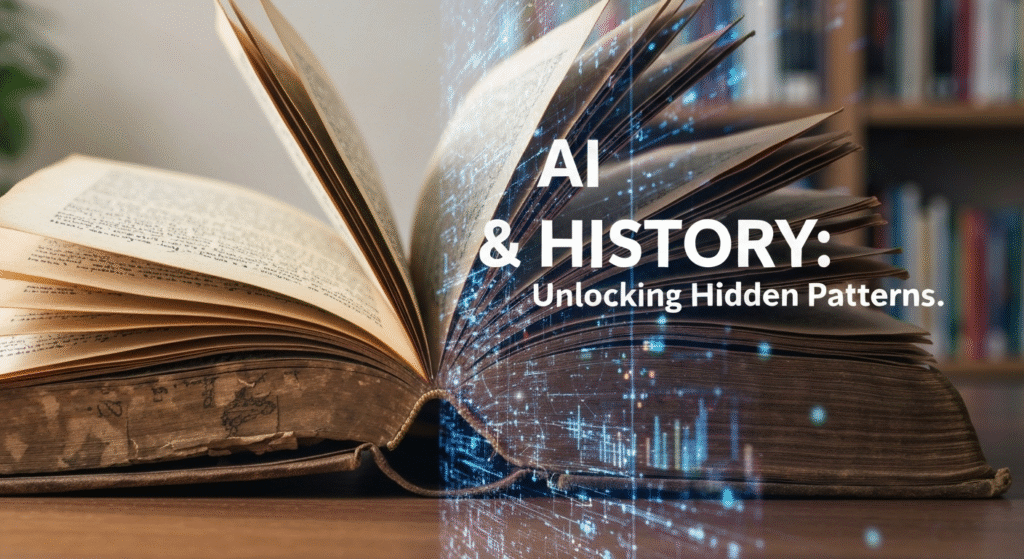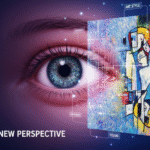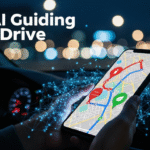Sifting through historical documents can feel like searching for a single grain of sand on a massive beach. For years, my process involved endless hours poring over digitized newspapers, letters, and public records, my eyes straining to catch a name, a date, or a connection. It was a labor of love, but the sheer volume of information was often overwhelming. I always wondered what I was missing—the subtle patterns and hidden stories buried in mountains of text. That’s when I decided to see if Artificial Intelligence could be more than just a buzzword. I wanted to know if it could be a new kind of magnifying glass for looking into the past.
My journey into using AI for historical analysis wasn’t about replacing my own judgment but enhancing it. For those curious about the intersection of technology and the humanities, I’m Zain Mhd. I’ve spent the better part of the last five years exploring how AI works and, more importantly, what it can do for us. My passion isn’t just in the code but in its application—how it can change the way we learn and discover. This project started as a personal curiosity: could I teach a machine to read between the lines of history and show me something new? What I found was a powerful partnership between human intuition and machine-driven analysis, one that changed my entire approach to research.
The Old Way: My Traditional Research Process
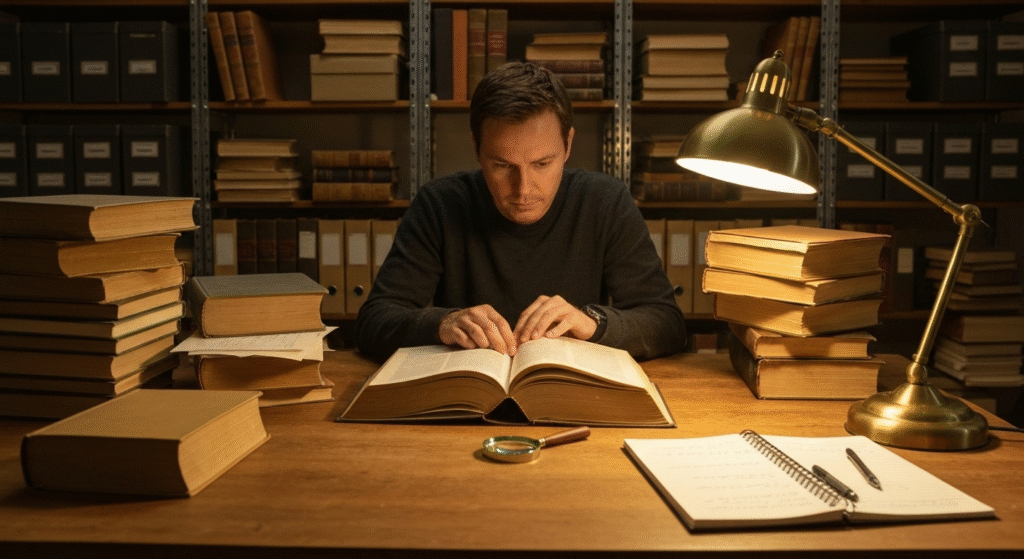
Before bringing AI into the picture, my workflow was straightforward and, honestly, a bit grueling. My main interest was in local newspapers from the late 19th century. I wanted to understand how small-town communities reacted to the rapid industrialization of the era. This meant spending countless hours on digital archive websites, using basic keyword searches like “factory,” “accident,” or “steam engine.” The process worked, but it had serious limitations.
First, it was incredibly slow. A single search could return thousands of results, each needing to be opened and read manually. I would spend a full day just to get through the articles from a single month, taking notes by hand in a sprawling spreadsheet. Second, my research was biased by my own assumptions. I was only searching for the terms I thought were important. This meant I could easily miss connections related to topics I hadn’t considered, like public health concerns, housing shortages, or social events tied to factory life. I was only finding answers to questions I already knew how to ask. The possibility of discovering completely unexpected trends felt remote.
Taking the First Step: Finding the Right AI Tools
Dipping my toes into AI felt intimidating at first. I’m not a data scientist, but I learned that you don’t have to be. Many tools are becoming more accessible. My first challenge was converting the old newspaper images into machine-readable text. From there, I needed a way to make sense of that text.
From Dusty Pages to Digital Data: The OCR Hurdle
The first step was using Optical Character Recognition (OCR) software. This technology scans an image of a document and converts it into a text file. While modern OCR is incredibly accurate, old documents present unique problems. Faded ink, strange fonts, and yellowed paper can confuse the software. I ran a batch of 100 newspaper pages through an open-source OCR tool and found the results were about 85% accurate. Words like “steam” were sometimes read as “steam” or “gleam.” This meant my first real task was data cleaning—a tedious but essential process of correcting the OCR’s mistakes. It taught me the first rule of working with AI: the quality of your output depends entirely on the quality of your input.
Choosing a Tool for Text Analysis
Once I had clean text, I needed a way to analyze it. After some research, I decided to experiment with tools that used Natural Language Processing (NLP). NLP is a field of AI that helps computers understand human language. I didn’t want to get bogged down in complex coding, so I opted for a user-friendly analysis platform that allowed me to upload my text files and run several types of analysis. These platforms can identify key themes, names, locations, and even the sentiment of the text without requiring a single line of code. This was the perfect entry point for my experiment.
The “Aha!” Moment: How AI Spotted a Hidden Story
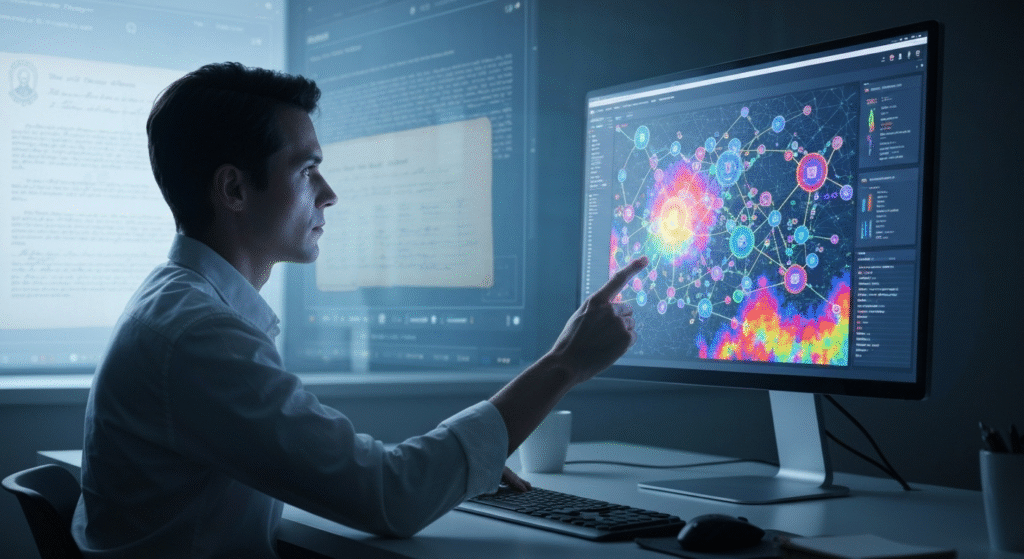
My initial goal was to track reports of industrial accidents. I uploaded the text from about two years of a local newspaper’s run. Manually, this would have taken me months to analyze with any depth. The AI processed it in under an hour. At first, the results were what I expected—a list of the most common words like “factory,” “injury,” and “worker.” But then I dug deeper into a feature called “entity recognition,” which identifies and links proper nouns.
The AI churned through the data and presented a connection I never would have looked for. It flagged a recurring link between articles mentioning minor factory fires and the name of a local physician, Dr. Alistair Finch. A keyword search for “fire” would never have revealed this. A search for Dr. Finch would have just shown he was a doctor. But the AI, by analyzing proximity and frequency, suggested a pattern.
Intrigued, I used this lead to go back to the archives with a new, specific purpose. I found that Dr. Finch was not just treating injuries; he was writing letters to the editor, consistently advocating for better fire safety measures and ventilation in the new mills. He was a public health advocate hiding in plain sight. The AI didn’t understand the story, but it saw a statistical anomaly that my human brain had glossed over. It handed me the thread, and I got to pull on it to unravel a fascinating piece of local history.
To put it in perspective, here’s how the two methods stacked up for this specific discovery.
| Feature | Manual Research | AI-Assisted Research |
| Time to Discovery | Potentially never; relied on accidental discovery. | Approximately 3 hours (including data prep). |
| Method | Broad keyword searches (“fire,” “factory”). | Topic modeling and entity recognition. |
| Scope of Analysis | Limited by what I could read in a day. | Analyzed two full years of newspaper text at once. |
| Type of Insight | Confirmed existing hypotheses. | Revealed a novel, unexpected connection. |
| Required Skill | Patience and meticulous note-taking. | Basic data cleaning and ability to interpret AI output. |
Dealing with the Noise: False Positives and AI Quirks
My experience wasn’t all seamless discovery. The AI made plenty of mistakes, and learning to spot them was just as important as following its good leads. These “false positives” often stemmed from the AI’s inability to understand historical context or nuanced language.
For example, the sentiment analysis tool often got confused. An article that sarcastically praised a factory owner for a “remarkably small” number of accidents was flagged as positive. The AI missed the irony completely. It also struggled with names. It once confused “Washington St.” (a street) with “Mr. Washington” (a person) because of the similar structure, leading me down a rabbit hole for a few hours.
Here are some of the key challenges I had to manage:
- OCR Inaccuracies: Gibberish text from poor scans could skew results, requiring me to manually correct the source files.
- Lack of Context: The AI couldn’t grasp sarcasm, irony, or cultural norms from the 1890s. This is where human oversight is critical.
- Ambiguous Language: Words with multiple meanings were a constant hurdle. The AI might tag the word “post” as part of a building instead of the local newspaper’s name, The Morning Post.
- Over-Patterning: Sometimes, the tool would find patterns that were statistically significant but historically meaningless. It was my job to separate the signal from the noise.
This process taught me that AI in this field is less of an oracle and more of an over-enthusiastic research assistant. It brings you everything it finds, and you, the researcher, have to decide what’s important and what’s junk. For more on the technical challenges, Stanford’s Text Recognition and Mining project offers some great insights into the complexities.
The Human-AI Partnership: My New Research Workflow
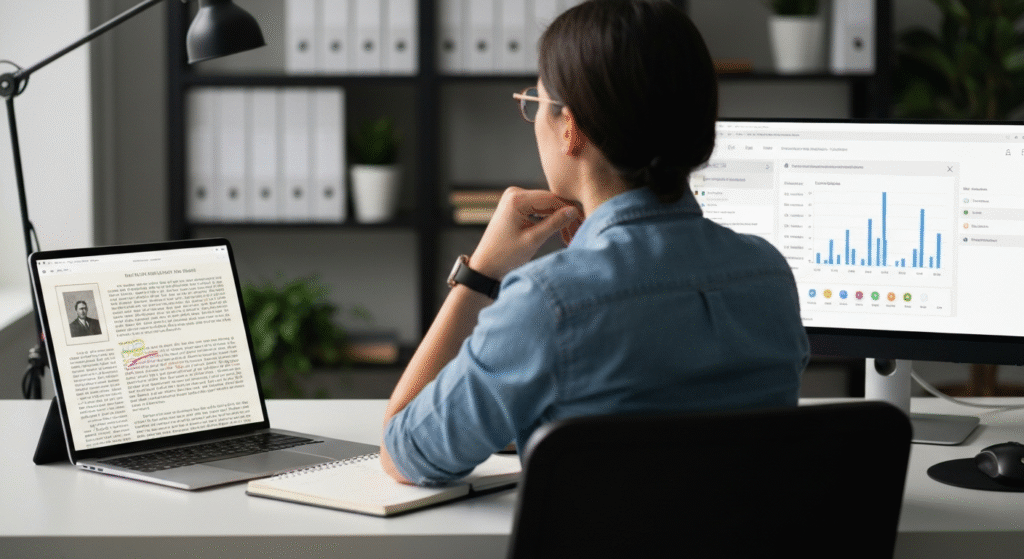
After months of experimenting, I’ve settled into a new hybrid workflow. It combines the scale of machine analysis with the depth of human interpretation. The AI is a tool for exploration and hypothesis generation, not a replacement for critical thinking. My process now looks like this:
- Digitize and Clean: I start with high-quality scans and run them through OCR software, followed by a round of manual correction. This foundational step is non-negotiable.
- Broad AI Analysis: I upload the clean text and let the AI do a first pass. I look for high-level patterns, unexpected word pairings, and recurring entities. This is my discovery phase.
- Generate Questions: Instead of just finding answers, the AI helps me ask better questions. The Dr. Finch connection, for instance, led me to ask: “What role did local professionals play in labor advocacy?”
- Targeted Manual Research: With these new questions, I return to the archives. My manual research is now much more focused and efficient because I’m not just exploring; I’m investigating a specific lead.
- Interpret and Write: The final step is always human. I take the findings, place them in their historical context, and weave them into a narrative. The AI finds the dots; I connect them.
This partnership has clear benefits and drawbacks that any aspiring digital historian should consider.
| Pros | Cons |
| Massive Scale: Can analyze thousands of documents in the time it takes to read one. | Requires Clean Data: “Garbage in, garbage out.” Poor OCR or messy data leads to useless results. |
| Reduces Human Bias: Uncovers patterns a researcher might not think to look for. | Lacks Contextual Understanding: Cannot interpret nuance, sarcasm, or cultural significance. |
| Accelerates Discovery: Quickly generates new leads and research questions. | Can Produce False Positives: Requires significant human oversight to verify findings. |
| Democratizes Research: Allows individual researchers to tackle large-scale projects. | Learning Curve: Non-technical users may need time to get comfortable with the tools. |
Frequently Asked Questions (FAQs)
Do I need to be a programmer to use AI for historical research?
Not anymore. While knowing how to code opens up more powerful, customizable tools, there are many user-friendly platforms available that allow you to upload text and perform sophisticated analysis with just a few clicks.
What’s the biggest limitation of using AI on old documents?
The biggest limitation is often the quality of the source material. Faded ink, complex scripts, and damaged pages can lead to inaccurate OCR, which corrupts the data before analysis even begins. AI also struggles deeply with historical and cultural context.
Can AI understand old-fashioned handwriting?
Yes, to an extent. AI models specifically trained for handwriting, known as Handwritten Text Recognition (HTR), are getting better. However, they are still far less accurate than OCR on printed text, especially with inconsistent or stylized handwriting.
Is using AI for history considered “cheating?”
Not at all. Think of it like using a digital archive instead of a physical one, or a word processor instead of a typewriter. It’s a tool that helps you manage and analyze information more effectively. The core work of interpretation, contextualization, and storytelling remains entirely human.
Conclusion: A New Frontier for Exploring the Past
My journey using AI to analyze historical documents has been transformative. It didn’t give me all the answers, but it pointed me toward questions I never would have thought to ask. The story of Dr. Finch, the quiet advocate for worker safety, was lying dormant in those archives, waiting for a tool powerful enough to notice a faint but persistent signal. AI provided that tool. It acted as a tireless assistant, highlighting statistical whispers that I, as a human researcher, could then amplify into a full-throated story.
For fellow researchers and history buffs, my advice is to be curious and critical. Don’t view AI as a magic box, but as a new lens through which to view the past. It won’t replace the historian’s intuition or the thrill of discovery. Instead, it complements it, clearing away some of the manual labor to give us more time for what truly matters: understanding and telling the rich, complex, and often hidden stories of our history.
